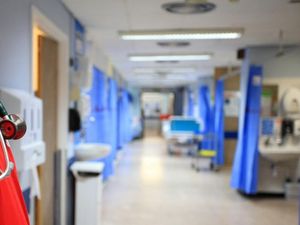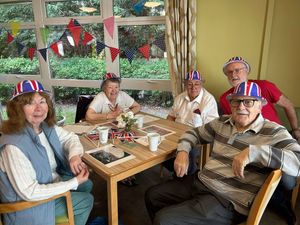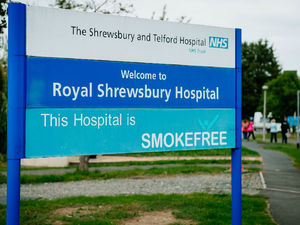Half of Shropshire A&E patients wait over four hours
Almost half of A&E patients at Shrewsbury and Telford Hospital Trust waited four hours or longer to be admitted, transferred or discharged in December, figures show.

The figure is worse than SaTH’s performance in December 2017, and national health bosses have warned the worst of this winter could still be to come.
In total there were 9,311 emergency attendances at either Princess Royal Hospital Telford or Royal Shrewsbury Hospital in December.
Of those, 3,878 patients waited more than four hours to be admitted, transferred or discharged.
The NHS’s target is for 95 per cent of patients to be dealt with in four hours, but at Shrewsbury and Telford Hospital trust, it was just 58 per cent.
This was worse than December 2017, when 63 per cent of patients were seen within four hours.
It was also a significant drop on the figure for November, which saw the trust record 68 per cent.
The strain on the county’s A&E departments has been no secret in recent months, with the trust acknowledging the pressure.
Health chiefs’ long-term hope for a solution is the Future Fit plan which would see one A&E created – instead of at both the trust’s hospitals, as is currently the case.
A decision on the plan – which recommends Shrewsbury becomes home to the A&E– will be taken in a public meeting on January 29, at Harper Adams University in Newport.
The decision to hold the meeting in Newport has been criticised by health campaigners who say the location will prevent members of the public attending.
Responding to the figures Sara Biffen, deputy chief operating officer at The Shrewsbury and Telford Hospital NHS Trust (SaTH), said: “We know that our performance against the A&E target is not where we want it to be, but our first priority is to ensure our patients are treated safely and appropriately.
“Our A&E departments remain under a great deal of pressure, dealing with increasing attendances and more and more complex conditions, such as respiratory problems, which means more people are being admitted into our hospitals.
“The challenges we face are well known and require a long-term strategic solution. In the meantime, we continue to work with our partners both in the NHS and in social care so that those patients who no longer need the specialist care we provide can leave our hospitals in a safe and timely manner.
“I would like to thank our staff who have worked so hard to ensure our patients are treated safely and with kindness despite these very challenging conditions.
“We would ask people to please think carefully about alternative local services, which can avoid what can be a lengthy and stressful visit to hospital.
Alternative
“Many conditions can be seen much more quickly using alternative services and A&E should only be used for the most serious injuries and illnesses.
“Pharmacies are often seen simply as dispensaries for medication, but pharmacists are experts in medicines and will use their clinical expertise, together with their practical knowledge to offer advice on common problems such as coughs, colds, aches and pains and can also help you decide whether you need to see a doctor.
“NHS 111 can provide medical help fast when it’s not a 999 emergency.”
Across England, the number of patients waiting more than four hours reduced from 292,860 in December 2017 to 270,171 last December – despite overall attendances increasing.
Dr Nick Scriven, president of the Society for Acute Medicine, said: “There is more demand on the NHS, but that is something those of us on the frontline have been warning of for some time, and it cannot become an acceptable rationale for poor performance.
“My sincere hope is that the so-far mild weather has not lulled our leaders into a false sense of security, and that just because things are better than 12 months ago, this does not make it good, as key targets in preparing for winter were not achieved.”
An NHS spokesman said: “Thanks to the hard work of NHS staff, monthly figures published this morning show the health service performed better for A&E services this December, than December 2017, despite successfully caring for 3.9 per cent more people within the current four-hour target.
“We are now in what can be the most pressured time of year – flu, other winter bugs and adverse weather conditions can all increase, so the situation is being closely monitored.”
Shadow health secretary Jonathan Ashworth criticised the “staggeringly bad” NHS England figures, saying they were a “shocking indictment of nine years of Tory cuts, failure to recruit staff and a botched NHS reorganisation”.
“Patients are waiting longer in pain and distress, with a real risk that their health could deteriorate further,” he said.
“Patients deserve better.”
NHS leaders recently said they were considering scrapping the 95 per cent four hour A&E waiting time target, to give serious injuries and illnesses more priority




